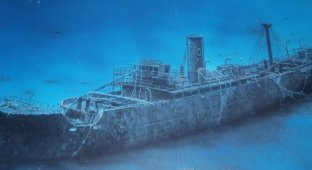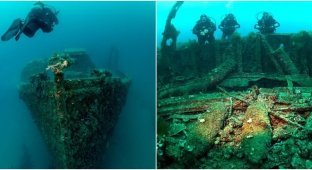The largest disaster among military ships, or How the "Indianapolis" sank (4 photos)
The destruction of the American cruiser Indianapolis, which occurred in 1945, is still considered the largest case of the death of a military ship's crew during a single sinking. Then, as a result of the Japanese attack, about 900 people died. 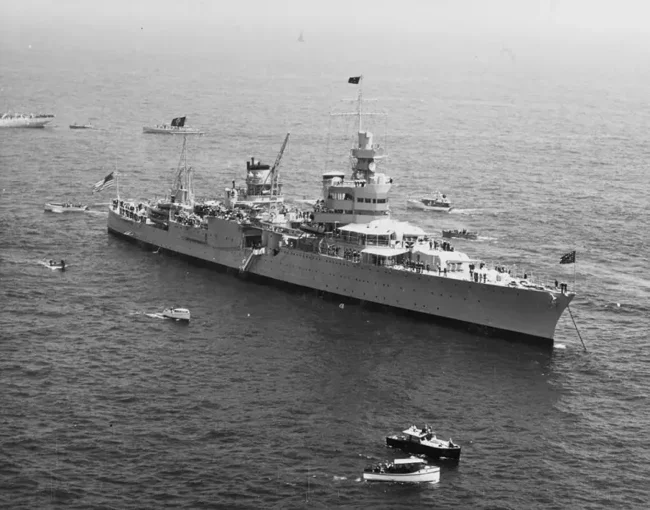
About the cruiser Indianapolis
The US Navy cruiser was commissioned in mid-November 1932. It was the second, and, at the same time, the last heavy ship of the Portland series. Over the years of service, the ship received 10 battle stars, as it actively participated in the battles of World War II. The cruiser proved itself: not only was it the most formidable American ship, it also easily dodged shells during shelling from the Japanese fleet.
As the most reliable ship, it was the Indianapolis that was entrusted with one of the most important and secret tasks. In early summer 1945, a top-secret cargo was delivered to the cruiser: even Captain Charles Butler McVay did not know what was in it. Moreover, the captain even learned about the destination on the way: the cargo had to be delivered to the island of Tinian. Inside the small boxes with the cargo was the "filling" for a nuclear bomb called "Little Boy". It was this that the United States would drop on Hiroshima in August of that year.
The cargo was successfully and promptly delivered to the required location. The task was completed. But neither the captain nor his subordinates had any idea that the worst was yet to come.
"Indianapolis" asks for help
The next voyage of "Indianapolis" was to Guam, then to Leyte Island (Philippines). During the journey, it was necessary to maintain a certain trajectory: there was a risk of running into Japanese submarines.
Captain McVay, relying on personal luck, ignored the warnings of his superiors, effectively taking responsibility for the fate of 1,196 crew members who were on board at the time. According to his information, no enemy submarines were supposed to be encountered along the route. But the captain was wrong.
On the night of July 29-30, 1945, the cruiser was attacked by submarine I-58, belonging to the Imperial Japanese Navy. She literally torpedoed the Indianapolis from a distance of four miles. A minute later, an explosion occurred, destroying the ship's engine room and killing several crew members. It can be said that they were luckier than the rest of the Indianapolis sailors, because death was instantaneous.
A huge hole appeared in the cruiser, which meant that it was destined to remain afloat for literally a couple of minutes. The surviving sailors could not even send a distress signal: the only radio transmitter was out of order. Much later it would turn out that the cruiser's radio operator still managed to transmit an SOS signal. It was received by three US stations, but was probably considered a "false call" - disinformation from the Japanese.
Captain McVay, who turned 47 that day, ordered everyone who was still alive to immediately abandon the sinking ship. He tried his best to remain calm and encourage the crew. He promised the crew that a ship would come for them soon, since the area was quite navigable.
An attempt to survive at sea
12 minutes had passed since the torpedoing. The half-destroyed Indianapolis, filling with water through a huge hole, sank at a depth of more than 5,400 meters. About 300 crew members went to the bottom with it. Help arrived only on the fourth day after the ship's death.
Those who did not drown with the ship were scattered over almost 250 square kilometers of the ocean. The sailors had to spend more than three days among sharks. Some managed to put on a life jacket in advance, some found rafts and large floating debris on the water, which allowed them to stay afloat. 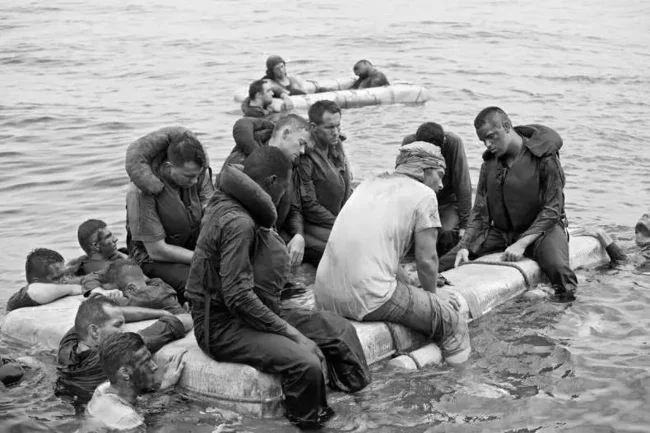
Most of the wounded died on the first night. Many were poisoned and delirious due to the ship's fuel spilling on the surface of the water. Several dozen more crew members died the next day.
On the second day, sharks appeared: they had not seen such abundant prey for a long time. First, the sharks destroyed the bodies of the dead sailors. Fresh blood, having got into the water, attracted many predators from all over the Philippine Sea: sharks can smell blood tens of kilometers away. As survivors said, about 80 people huddled together in one place. The sharks surrounded them: only 17 sailors managed to escape.
But sharks were not the worst thing that awaited the crew of the Indianapolis. Many experienced severe hallucinations. People went crazy one after another: they tore off their life jackets, threw themselves into the water from rafts. Salt sea water is not drinkable, so many died of dehydration, and those who were right in the water - from hypothermia. Some tried to drink sea water, but quickly died from poisoning.
And on the third day, those who were wearing life jackets began to drown en masse. The jackets were made of cotton fibers and could remain buoyant for no more than 48 hours.
Rescue of the crew
Since no one responded to the SOS signal, no one looked for the sunken Indianapolis, although there was no contact with it. On August 2, a large number of sailors in the open ocean were accidentally spotted by an American PV-1 Ventura patrol aircraft. The pilots informed the command, and military vessels and a seaplane were sent to the specified coordinates. 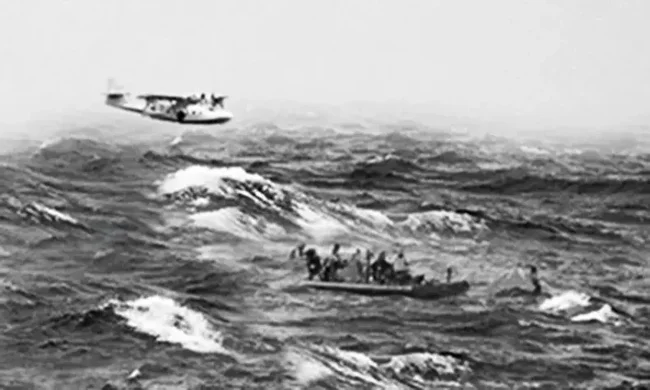
321 people were raised from the water alive. Five of them died before they could reach the hospital. According to experts and survivors, 883 sailors died. They died from wounds, sunstroke, hypothermia. Many went crazy, committed suicide, or fell victim to sharks.
Consequences and cultural reflection
Captain Charles McVay of the Indianapolis survived the sinking and was accused of failing to comply with anti-torpedo maneuvers. In fact, the ship was simply not provided with an anti-torpedo escort. Other sailors from the sunken cruiser claimed that the captain was not guilty. This was confirmed by the captain of the Japanese submarine Mochitsura Hashimoto. He said that he fired six torpedoes at the ship, two of which hit the target. Unable to withstand the accusations, which were joined by relatives of the victims, the captain shot himself in 1968. The US Congress rehabilitated him only in 2000. The cruiser Indianapolis itself was discovered in August 2017: 72 years later at the bottom of the Philippine Sea. 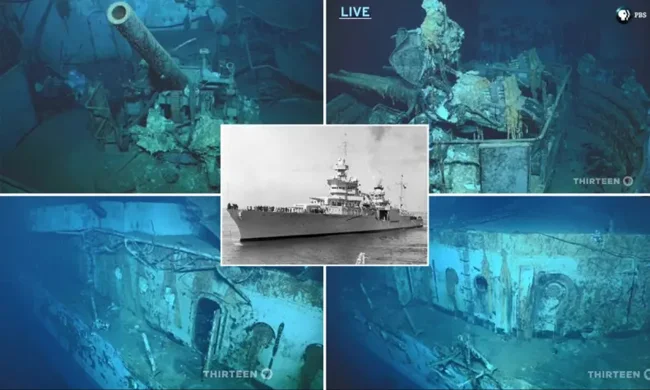
Based on the story of the sinking of the ship "Indianapolis" they made a documentary film "Ocean of Fear: The Worst Shark Attack" and two feature films: "Mission of the Shark" and "Cruiser".












